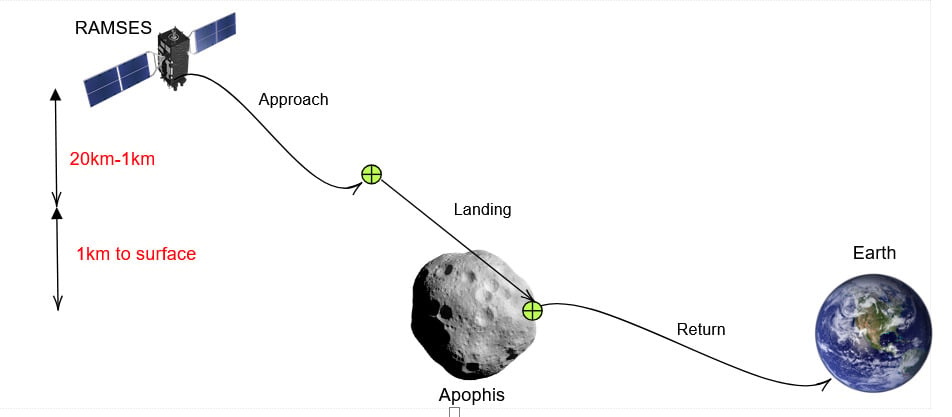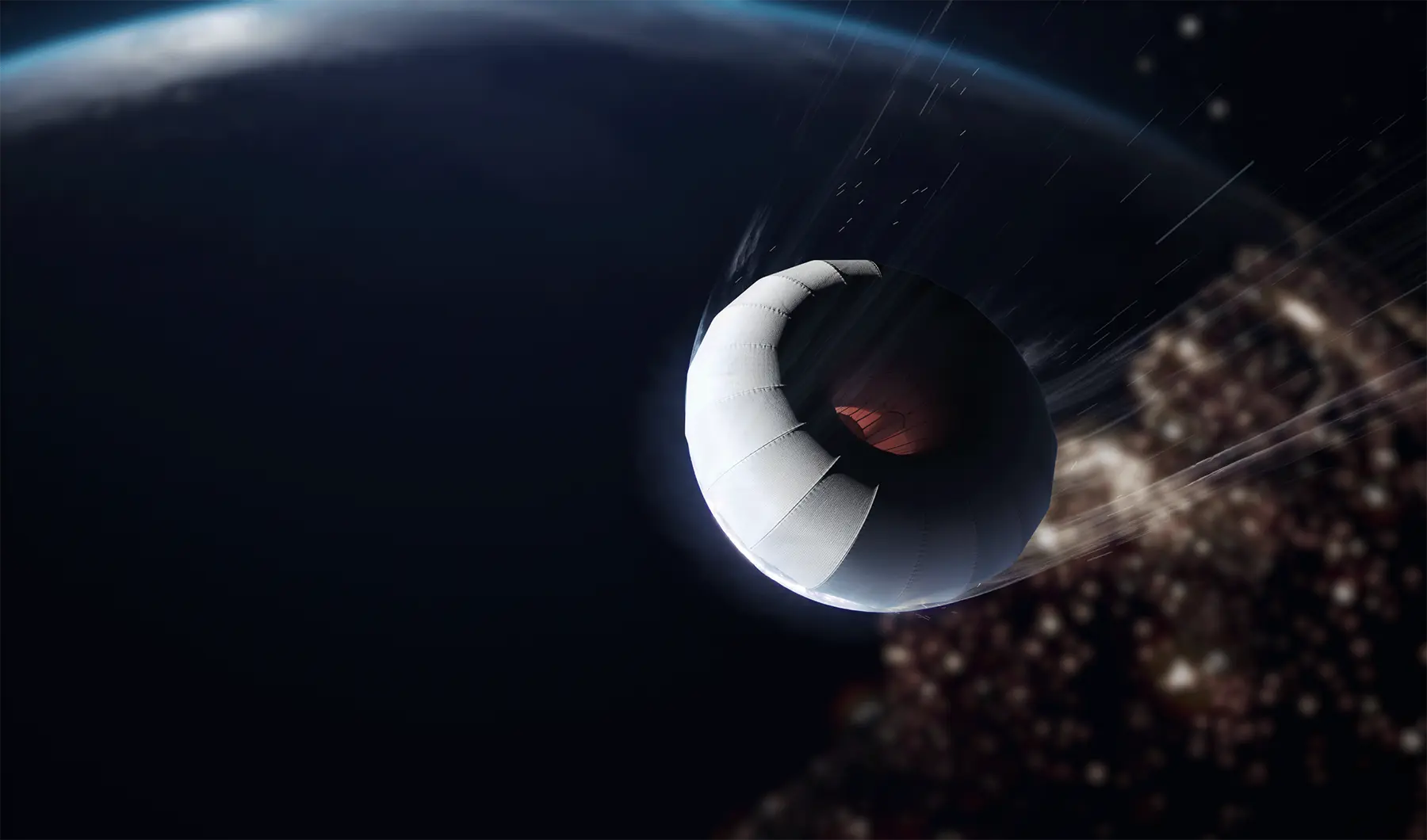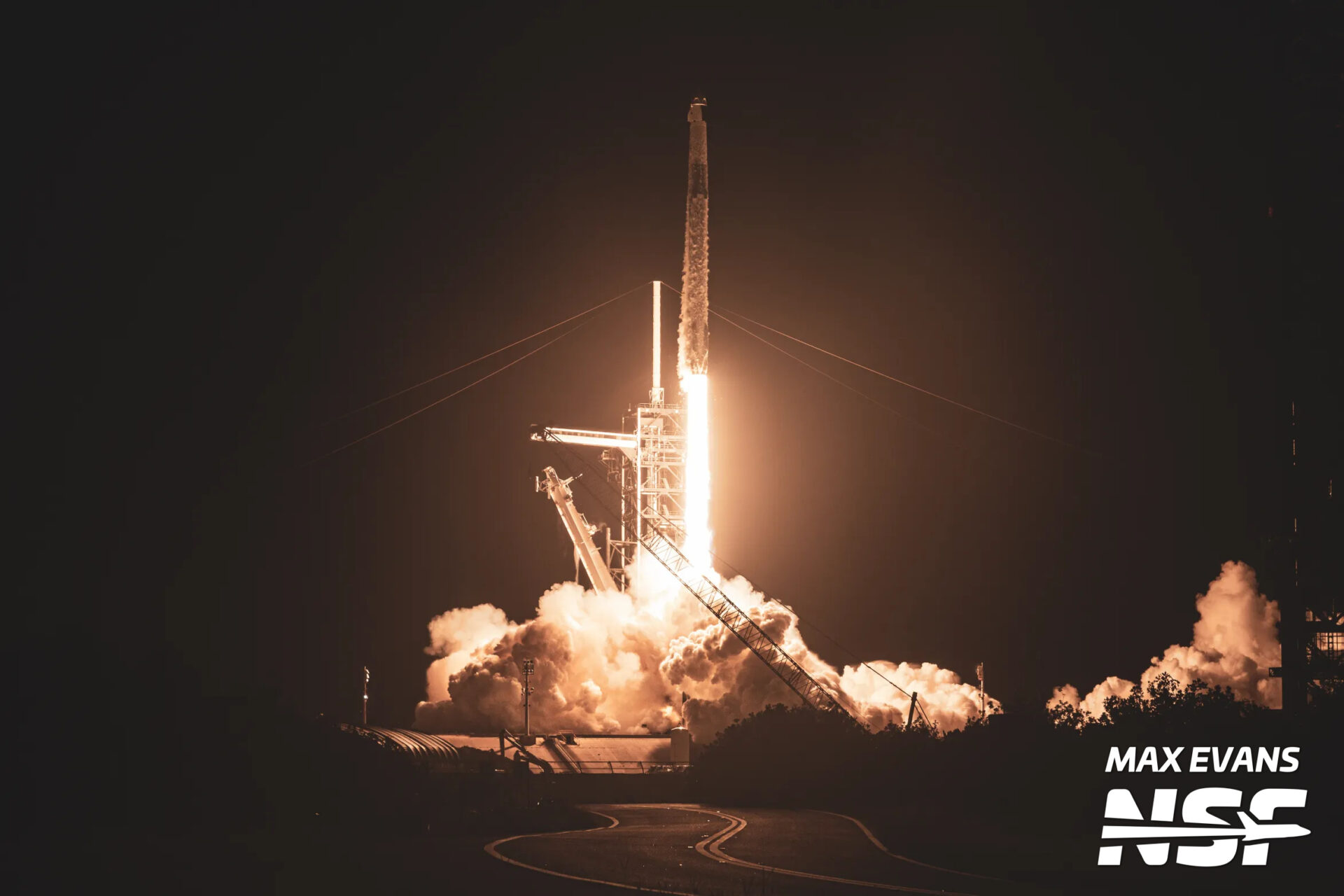*
The coming of asteroid (99942) Apophis in April 2029 has sparked plenty of discussion both inside and outside the astronomical community. Despite original fears that it would pose a threat, Apophis will safely pass around 32,000 km away from Earth – though admittedly that is still closer than some geostationary communications satellites. That close approach offers a unique opportunity for those interested in asteroid science to take an up-close look at one of these relics of the early solar system, and various groups are planning to do just that. A new paper from Victor Hernandez Megia and his colleagues at the German Aerospace Center (DLR) suggests a new mission that could provide even further insight into the interior of Apophis – by returning part of it to Earth.
The APOphiS SUrfaces saMpler (APOSSUM) mission is designed with one primary goal in mind – get a sample of Apophis back to Earth for examination. However, that will not be easy. Doing so will require three-different stages of operations, each with their own requirements and potential pitfalls.
First will be the approach phase. APOSSUM is designed to hitch a ride on the Rapid Apophis Mission for Space Safety (RAMSES) – an ESA mission that is designed to monitor the asteroid remotely from a distance of about 20 kilometers. After detaching from the RAMSES craft, APOSSUM will make its way to about 1 km from Apophis’ surface. To do so, it will use two different modeling techniques – one for the shape of the asteroid, and one for its gravitational field.
Fraser discusses some of the techniques we’ll use as we watch Apophis pass us by.
Apophis’ shape has been relatively well defined, at least compared to other asteroids. NASA describes it in terms of its x-y-z dimensions, with sizes of 450 m, 370 m, and 170 m in each coordinate respectively. The gravitational field, which is assumed to be uniform at a distance of 1 km, uses a technique called Spherical Harmonics, which is computationally efficient and therefore better to use when accuracy isn’t as much a concern.
However, as APOSSUM starts its second phase, that accuracy begins to matter. As it approaches in an attempt to land, the spacecraft can no longer ignore variations in the density of its target, as they start to have major impacts on how the landing process itself proceeds. At this point, the spacecraft will switch to a non-constant density model, and the authors tried several different versions with varying densities throughout. As expected, the variability in those models significantly changed the spacecraft’s trajectory when that was subsequently modeled.
That sounds like a control problem – which is exactly what the authors did next. They implemented two different control techniques – Proportional-Deriviative (PD) and Bang-Bang – watched how they played out in their simulation of a landing sequence. Bang-bang, which is equivalent to a “binary” thrust value of either on or off, had the advantage of being quicker to get to a landing point. PD control, on the other hand, fine tuned the thrust based around feedback from sensors around the spacecraft. While it is more fuel efficient, and was therefore selected as the superior methodology, it is susceptible to variations in the density distribution of its target asteroid, in some cases completely missing the mark of a landing in some of the simpler scenarios.
Fraser discusses how we would react to an incoming asteroid.
If the spacecraft is able to successfully land on Apophis, it will hopefully be able to collect a sample, which, although that has proved a challenge in other asteroid return missions, the details aren’t discussed in detail in the paper. But if it does (and even if it doesn’t), the next phase of the mission would be a return to Earth, where APOSSUM launches back off the asteroid and returns to a remote part of the Australian outback. Timing is critical in this phase, as the mission designers didn’t want to interfere with telescope observations of Apophis as it passed by close to Earth, which includes the consideration that the spacecraft would want to be on the opposite side of the Earth from where Apophis will be making its closest approach.
One major question mark for the mission is the timeline – the optimal launch date for the mission is March 20, 2029 – a little less than 4 years away. Designing, testing, and launching an entire mission in under four years is a tall task. But, given the interest surrounding what will be the closest visit from an asteroid in decades, there might be enough resources devoted to studying it to pull the APOSSUM mission off.
V Hernandez Megia et al. – Modeling and control techniques for landing on (99942) Apophis: An analysis of a mission scenario
UT – ESA is Building a Mission to Visit Asteroid Apophis, Joining it for its 2029 Earth Flyby
UT – Asteroid Apophis’ 2029 Flyby Will Provide a Bonanza of Asteroid Science
UT – How Big is Apophis?





No comments! Be the first commenter?